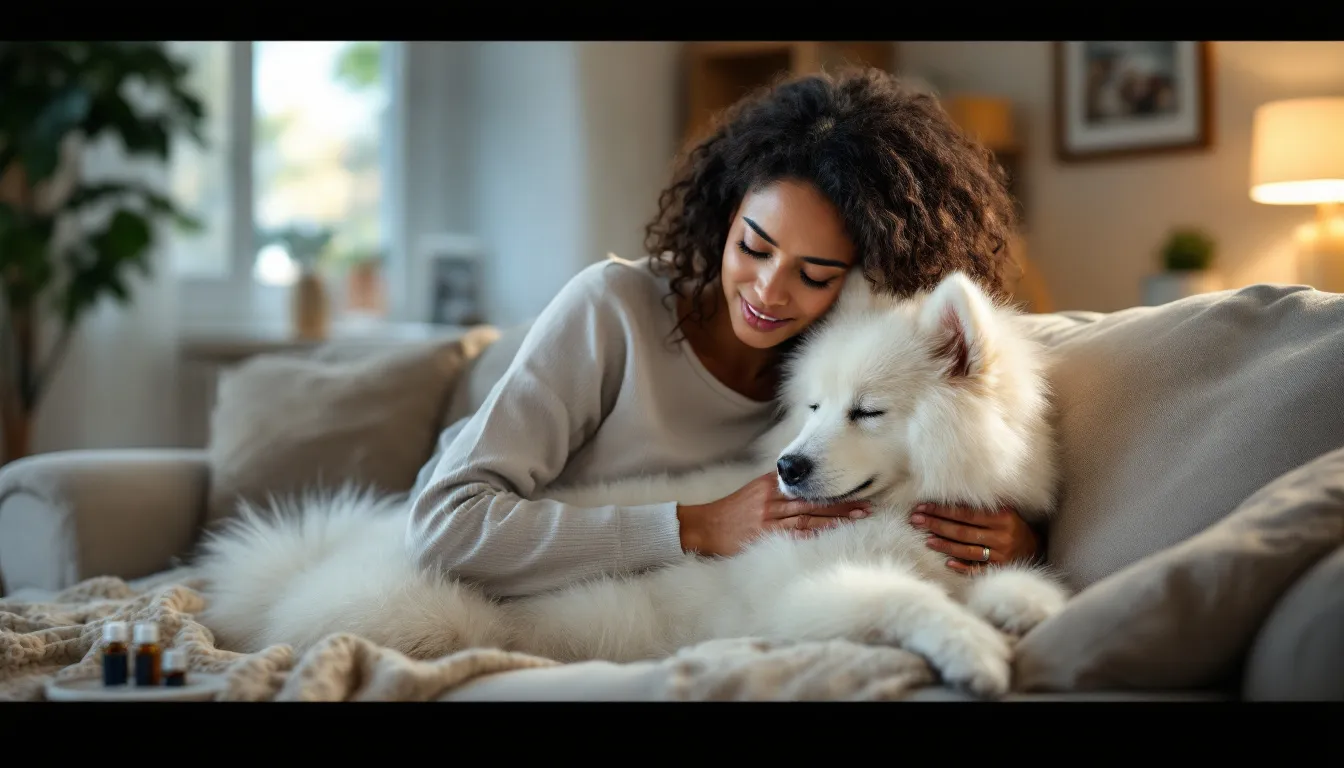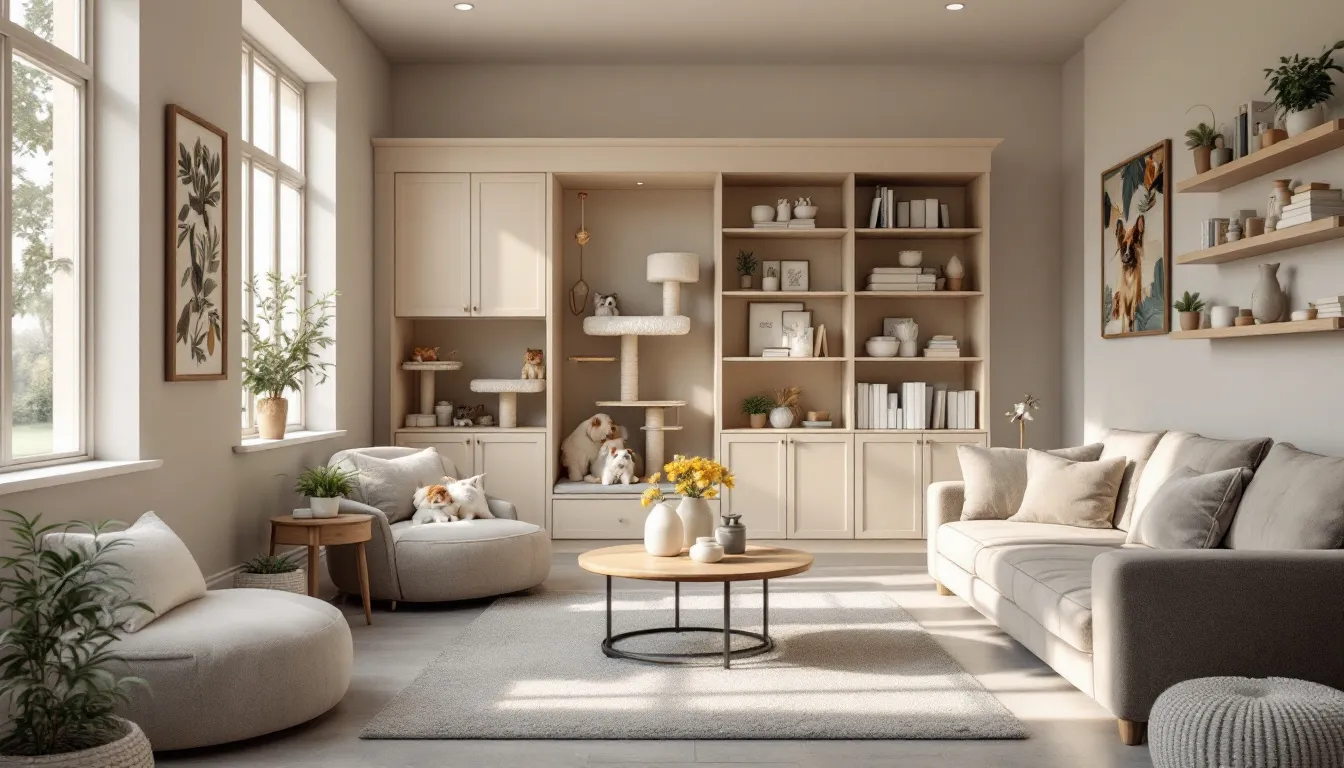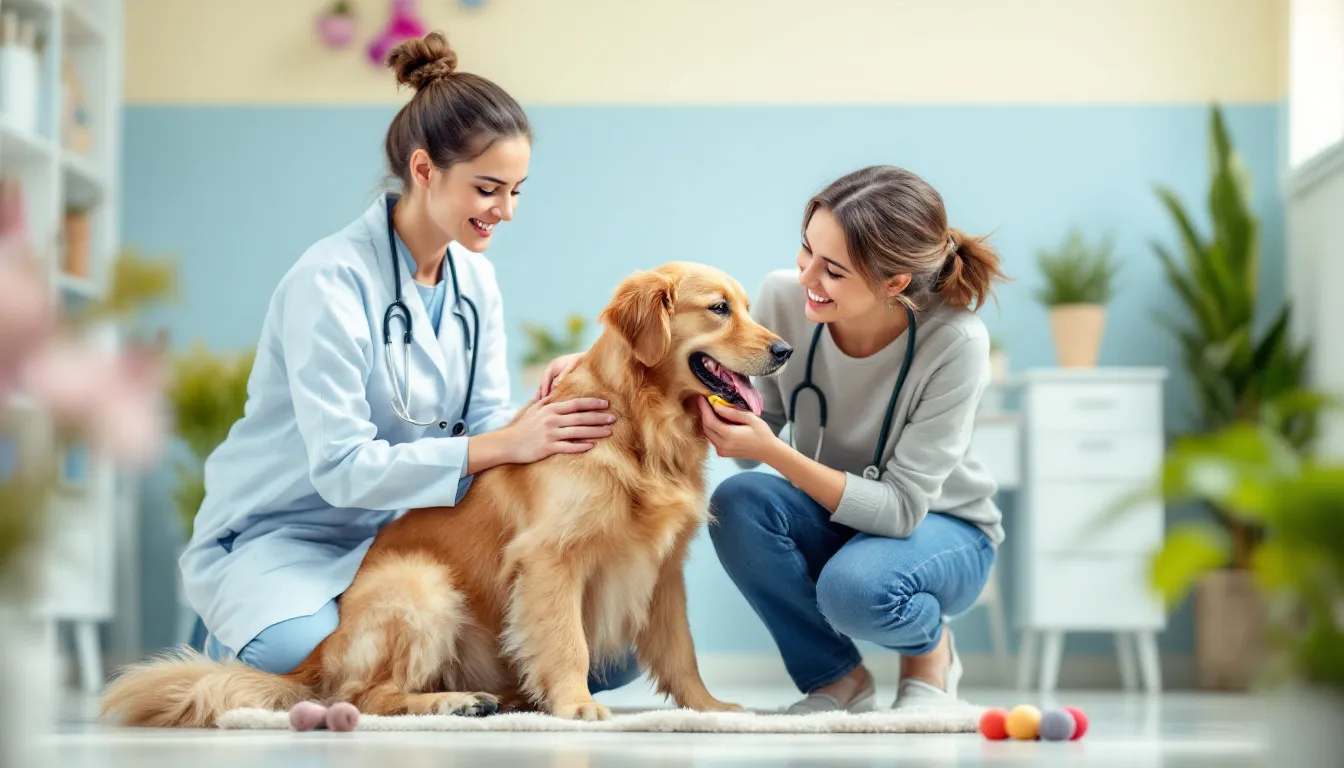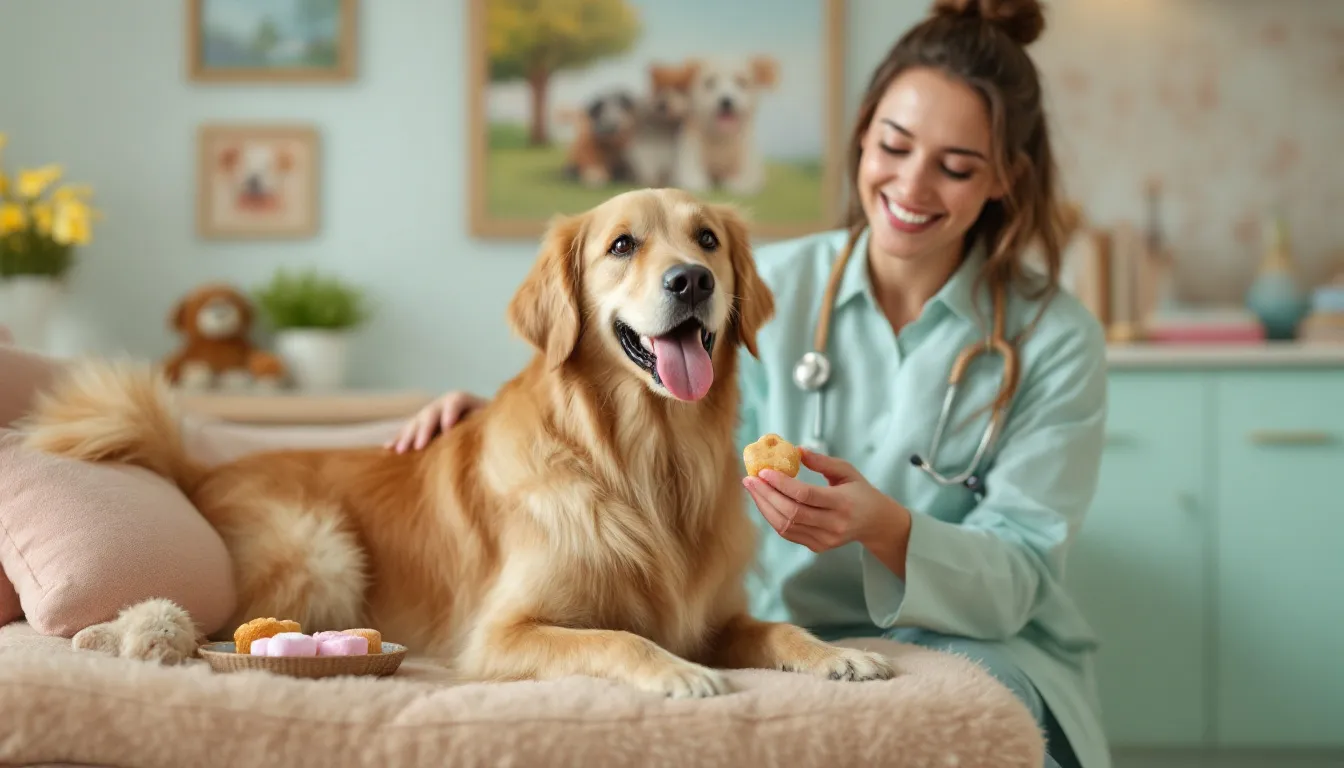Is your pet anxious about vet visits? You’re not alone. Learning how to prepare your pet for vet visits—how to reduce stress, anxiety—can significantly improve the experience for both of you. This article offers top tips and practical strategies for preparing your pet for vet visits: how to reduce stress, anxiety, and make vet visits more comfortable. Discover how to ease handling fears, get your pet used to the carrier, and strengthen positive associations with the vet.
Key Takeaways
-
Desensitize your pet to handling and use high-value treats to create positive associations with touch.
-
Acclimate your pet to the carrier and car rides to enhance their comfort during vet visits.
-
Schedule appointments during quieter times and bring comfort items to help reduce your pet’s anxiety.
Desensitize Your Pet to Handling

Desensitizing your pet to handling is a great strategy for vet visits. Pets often get anxious when touched in certain areas, so start with less sensitive regions and gradually move to more sensitive spots. This method helps reduce anxiety and makes handling a normal part of your pet’s routine.
High-value treats during handling sessions can boost your pet’s motivation and create positive associations with being touched. Special treats reserved for these sessions work best. Monitor your pet’s body language for signs of discomfort and adjust your approach accordingly.
Mock vet visits at home can familiarize your pet with procedures they might encounter at the clinic. Begin these sessions in a calm, distraction-free environment. As your pet becomes more comfortable, practice in various settings to help them generalize the experience and reduce stress.
Acclimate Your Pet to the Carrier
Comfort with the carrier is crucial for vet visits. Placing the carrier in a favorite room with soft bedding makes it inviting. Adding familiar items like toys or blankets can further enhance comfort during travels.
Introducing the carrier at a young age makes it a safe, familiar space. For cats, placing treats inside encourages voluntary entry. Once comfortable, gradually close the door while continuing rewards. Keeping the carrier out and accessible helps your pet see it as a normal part of their environment.
Creating a comfortable carrier environment helps your pet feel more secure during vet visits, especially for those anxious about unfamiliar surroundings and sounds.
Create Positive Associations with Car Rides
Car rides can stress many pets, but with effort, you can turn these journeys into positive experiences. Start with short, enjoyable car ride experiences to help them get used to the motion and environment. Gradually increase the trip length as your pet becomes more comfortable. Use high-value treats and praise to reinforce calm behavior during these outings.
Positive associations with car rides can reduce anxiety, making vet trips less daunting. If your pet experiences motion sickness, consult your veterinarian. Sometimes, a simple adjustment in car positioning, like placing them in the back seat, can make a significant difference.
Schedule Appointments During Quiet Times
The timing of your pet’s vet visit can greatly affect their stress levels. Scheduling appointments during less busy hours at the clinic can significantly reduce anxiety associated with crowded waiting rooms and unfamiliar pets.
Call your veterinarian’s office to ask about quieter times. Attending less crowded appointments can lead to a more positive experience for your pet, making them more comfortable and cooperative during the visit.
Strategically selecting appointment times helps ensure a stress-free veterinary visit for your pet.
Bring Comfort Items to the Vet Clinic

Bringing familiar comfort items to the vet clinic can ease your pet’s anxiety. Items like a favorite blanket or toy create a sense of security and familiarity in an otherwise unfamiliar environment. These items can make your pet feel more at ease during the visit.
For cats, synthetic pheromones like Feliway® can mimic natural calming scents. Distraction techniques, such as bringing toys or treats, can also help keep your pet occupied and less focused on stressors around them.
Providing familiar items helps you prepare your pet navigate their vet visit with more confidence and less anxiety.
Use Positive Reinforcement During Vet Visits

Positive reinforcement is a powerful tool for making vet visits positive. Rewarding calm behavior with treats and praise encourages your pet to remain composed. Regular positive experiences at the clinic can reduce future anxiety and fear associated with these visits.
Happy Visits, where your pet meets the veterinary team without medical procedures, can build trust and lead to a more relaxed experience during actual examinations. Not feeding your pet before the pet’s veterinary visit enhances the appeal of treats used during the examination, making your pet more motivated by the high-value rewards.
Consult Your Veterinarian About Anti-Anxiety Products
For pets with severe anxiety, consulting your veterinarian about anti-anxiety products can be transformative. Discussing prescription sedatives or calming supplements can help manage your pet’s stress levels during vet visits.
Your veterinarian can recommend various calming products, including natural remedies like Rescue Remedy®, which can effectively reduce anxiety. Maintaining open communication about the use and effectiveness of these products is crucial to finding the best solution for your pet.
Exploring these options can provide a stress-free veterinary visit for pets who struggle with severe anxiety.
Stay Calm and Confident
Pets often take emotional cues from their owners, so remaining calm and confident during vet visits is crucial for many pet owners. Staying positive and composed helps pet owners’ pets feel more at ease and reduces their anxiety, ultimately benefiting their pet’s health.
Recognize and respect your pet’s comfort level to prevent worsening anxiety. Consistency and patience are key to supporting your pet emotionally during these visits.
Displaying a calm demeanor alleviates your pet’s stress and makes the vet visit a more positive experience.
Plan Happy Visits to the Veterinary Clinic

Happy Visits are an excellent way to build positive associations with the veterinary clinic. These veterinary visits allow your pet to explore the clinic, meet the veterinary team, and receive attention without undergoing examinations, making it a great preparation for your dog’s vet visit.
Starting these visits at any age can help both young and anxious adult pets adjust to the clinic environment. Positive reinforcement during these visits can replace past negative memories with pleasant experiences.
Activities during Happy Visits, such as greeting team members, receiving treats, and exploring the hospital, foster a positive association with the clinic.
Skip Meals Before the Vet Visit
Skipping your pet’s meal before a vet visit can make treats more effective as rewards during the examination. This approach helps create positive associations and reduces stress during the visit.
Ensuring your pet is motivated by treats helps them remain calm and cooperative during their veterinary examination.
Summary
Summarize the key points discussed in the blog post, emphasizing the importance of each tip in preparing pets for vet visits. Conclude with an encouraging note for pet owners to implement these strategies for a stress-free veterinary experience.
Frequently Asked Questions
How to prepare your pet for a veterinary visit?
To prepare your pet for a veterinary visit, create a positive association by offering affection, treats, and cuddles during the appointment. Additionally, gently handle sensitive areas like legs and ears at home to help desensitize your pet to veterinary handling.
How to reduce stress in the veterinary waiting room?
To reduce stress in the veterinary waiting room, provide biscuit containers with treats for pets and use barriers to block views of busy entrances. These measures help keep both pets and owners calm and focused.
What are Happy Visits, and how can they help my pet?
Happy Visits are visits to the veterinary clinic where your pet can explore the environment without any exams, fostering a positive association with the clinic. This approach can significantly reduce your pet's anxiety during future veterinary visits.
Should I bring anything to the vet clinic to help my pet feel more comfortable?
Bringing your pet's favorite blanket or toy can significantly ease their anxiety at the vet clinic. Familiar items provide comfort and reassurance during their visit.


